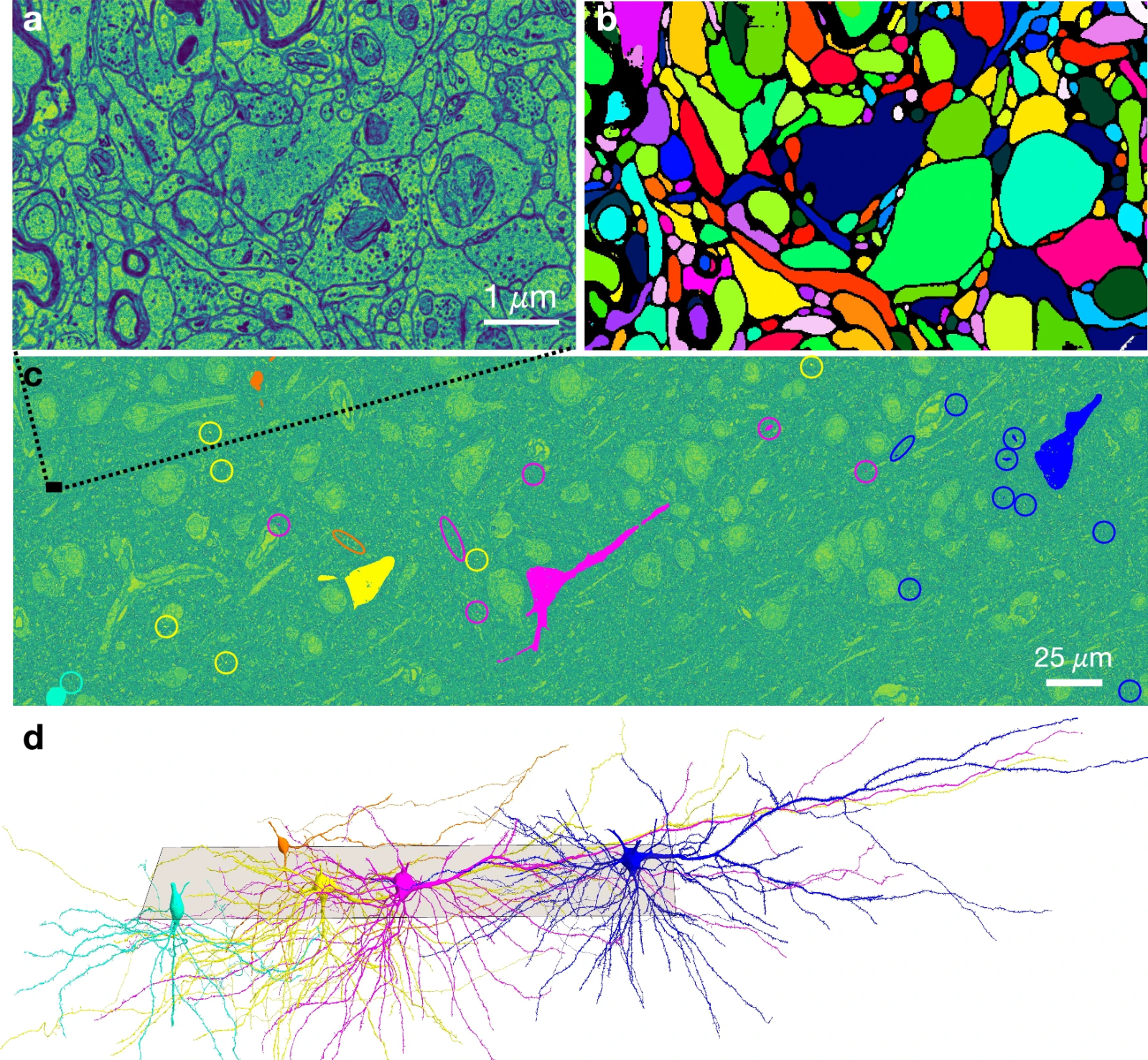Discovery: our brain in a critical phase transition state?
Follow us on Google News (click on ☆)

a. Electron microscopy (EM) image of a region of the human brain.
b. Segmentation data for the EM image in a. Colors indicate different segments.
c. EM image of a larger region of the human brain with the segmentation of five specific neurons, showing how the same neurons can cross the same plane multiple times. Circles highlight small, hard-to-see fragments. The black rectangle at the top left shows the region displayed in a.
d. 3D mesh reconstructions of the five neurons highlighted in c with the larger area shown in c indicated by the gray rectangle.
The study shows that human, mouse, and fruit fly brains share a similar cellular structure, close to a phase change. This finding could transform computational models of the brain. Researchers do not yet know exactly between which phases the brain is positioned, but this new information could help better understand its complexity.
By examining 3D reconstruction data of the brain, researchers found that these samples exhibited physical properties similar to those of magnets when heated. For example, the structure of neurons is fractal: the small parts resemble the whole.
Using techniques from physics, the researchers measured the structure of neurons, revealing repetitive patterns and varied sizes, typical signs of a critical state. These observations offer a new perspective on the brain's delicate balance between two phases.
The researchers found that these critical properties are the same across different species, suggesting a universal principle for brain structures. This could explain why different brains share similar fundamental principles and help model artificial neural networks.
The researchers plan to examine even more data, including larger sections of the brain from different species, to see if these findings hold true. This could help create simple models to better understand the brain and possibly even inspire new technologies.